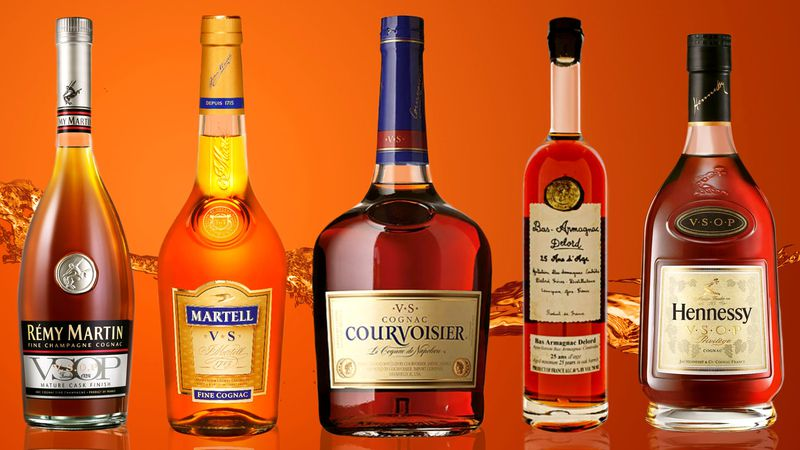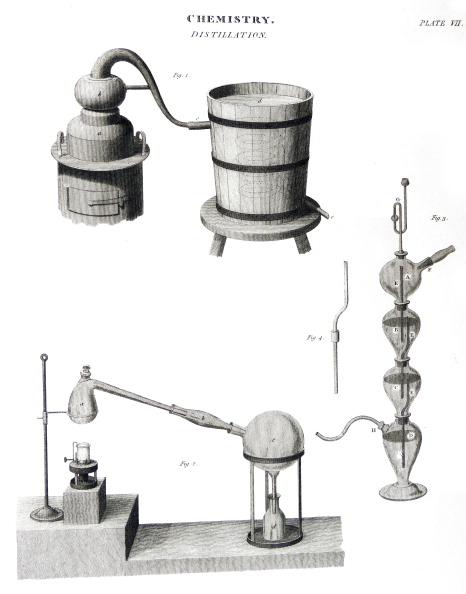Where To Start With Brandy, The Drink Of Aristocrats And Rappers Alike
Welcome to Gateways To Drinkery, where The Takeout offers an entry-level course on our favorite libations, and some suggestions on where to start drinking them.
Brandy
The lowdown: Among base spirits, brandy suffers an identity crisis. For some, it's the quintessential quaff of the gentry class—cigar-chomping old men in suits, dark wood bookcases, talk of railroad investments and union-busting. For others, it's the preferred drink of the African-American club scene—hip-hop, sips of Hennessy, and VIP bottle service. Aristocratic nightcap or trendy party-starter: What is brandy anyway?
When fruit ferments, yeast turns the natural sugar into alcohol, producing wine. This conversion continues until the yeast runs out of sugar or otherwise dies (usually when the percentage of alcohol rises too high and poisons the cells at 15 percent ABV or so). For the ancients, this represented the highest booze levels achievable, but in the Middle Ages, the invention of the alembic opened up a new alcohol frontier. Because alcohol boils at a slightly lower temperature than water, one can distill a liquid by heating it to the point where just the alcohol evaporates (and can be captured), leaving the water and other solids behind. "Brandy" is the generic term used for any distilled spirits made from fermented fruit.
Being utilitarian, early brandy was likely rough: high in alcohol, full of impurities from imperfect distillation, and made from inferior, cast-off fruit. With some care, though, the best would have resembled modern eau de vie. This unaged style of spirit is made by keeping only the most flavorful heart—or middle cut—that runs off the still. The resulting drink can be simultaneously high-proof and delicately fruity, both rough on the way down and pleasant to the nose. Eau de vie was (and still is) a highly regional product, showcasing the local fruits growing near the distillery. Flavors can be as common as poire (pear), kirsch (cherry), and framboise (raspberry), or as exotic as Douglas fir buds.
But the variety we normally think of as modern brandy is an aged product that got its start in the 1500s. Dutch traders in France found that the wine they bought spoiled too quickly to be bartered elsewhere on their travels, so they favored the more shelf-stable, twice-distilled product called brandewijn ("burnt wine" to the Netherlanders). In transporting this spirit, the Dutch happened upon a happy accident: The wooden barrels used to house the distillate added considerable flavor and color, mellowing the spirit into the smoother, easier-drinking brandy we have today.
Colonists in America brought the Old World with them by importing spirits like brandy—especially in French-influenced areas like the southern port of New Orleans—but plucky pioneers became self-sufficient and started making their own domestic distillates too. Plentiful grains such as corn and rye would make whiskey America's chief contribution to the spirits world, but American fruits yielded successful brandies like New England applejack and Southern peach brandy.
Today, we can find brandy of all stripes from all corners of the world, but the archetype of the category—and the drink most often implied when one calls out "a brandy, please"—is cognac. Made in only one region of southwest France, this spirit is distilled primarily from ugni blanc grapes and aged for years in barrels made from varieties of French oak. All other grape brandies try to be (and wish they were) cognac.

The taste: An unaged brandy should, first and foremost, taste and smell of the fruit it was made with, with most eau de vie aiming for flavor purity. Aged brandies have more muted fruit flavors. The grapes in cognac, for example, will mellow into raisin and jam, while fresh sweetness darkens into richer caramel. Smells change as well; what may begin as an aggressive alcoholic bomb in youth will soften into a more pleasant floral fragrance with time. Aged brandies' most important source of flavor, though, is the wood where they've been held, which can infuse them with hints of vanilla, spice, and rancio, a sweet nut flavor.
Cognacs (and other spirits made in that style) have a three-tier age designation system: The youngest are considered Very Special (VS, two years), older brandies are Very Special Old Pale (VSOP, four years or older) and the oldest are Extra Old (XO, six years or older). While consumers often assume that older is better—and smoother and more balanced—things are rarely that simple. Clear fruit presence will dominate in younger brandies, but it's replaced by the effects of wood; the point where "perfect" balance is achieved is really a matter of personal opinion.

The gateway: The four major cognac brands—Hennessy, Courvoisier, Rémy Martin, and Martell—have all been producing brandy since the 1700s. While each has a slightly different house style, the VS and VSOP offerings are the benchmarks of the field and represent the best place to start your own brandy exploration. Courvoisier VS is the sweetest, and therefore most approachable, but the drier Martell VS and Rémy Martin VSOP offer better balance.
Try sipping cognac neat (straight pour, no ice, served at room temperature) to experience the full flavor, though adding a little ice or splash of soda water is fine. Cognac also goes well in cocktails. The classic is a Sidecar, where the brandy is balanced by sweet triple sec and sour lemon, but fans of "brown, bitter, and stirred" will want to try that New Orleans original, the Sazerac, which is made with cognac, sugar, absinthe, and Peychaud's bitters.
If you're drinking on a budget, there are several big, lower-cost brands from American companies, but be wary. Domestic bottles may be considerably cheaper than the French stuff, but most are overly sweet. They're better used for deglazing sauté pans than for drinking. Paul Masson proves a rare exception, as it produces VS and VSOP offerings that hold up against entry-level cognac at half the price.

The next step: While cognac gets all the attention, brandy is a big, diverse category. Aged brandy lovers should start by moving one French region over to try armagnac, cognac's more assertive, bolder-flavored cousin. Delord 25 Year is exquisite, and it's remarkably affordable (at $70) for something of this age. American craft distillers also offer some innovative varieties: Germain-Robin has been around for decades and puts many European bottlings to shame, while the recent upstart Copper & Kings is making its name with experimental barrels and finishes.
Those wanting a little more fruit in their brandy can go one of two ways. For French finesse, look to calvados, an aged apple or pear brandy out of Normandy; Christian Drouin is a nice brand. For pure fruit essence, try the aforementioned eau de vie. European bottlings have the historical mystique, but some American makers have been perfecting the formula. Check out St. George (which makes a pear and a raspberry) and Clear Creek (which makes a half dozen varieties).
Talk like an expert: If you're serious about drinking brandy, yes, you'll want one of those fancy brandy snifters—and here's why. Brandy is an especially fragrant and delicate spirit, so the shape of the glass is meant to concentrate and emphasize the aroma. The big bowl gives a large surface area for the liquid (and therefore a lot of room for volatile alcohol to escape, carrying flavor and smells with it), but the narrow mouth focuses smells into a smaller opening. In fact, the mouth should be just large enough that your nose enters the glass, ensuring you pick up every last whiff. The short foot on a brandy snifter also serves a purpose, as it's meant to encourage you to hold the bowl in your hand, warming your brandy slightly, kicking off even more floral perfume.

